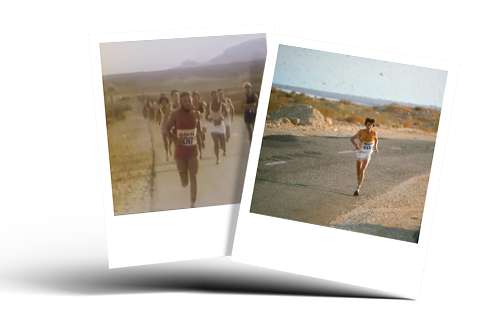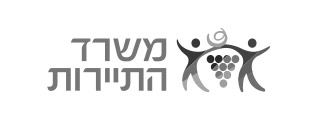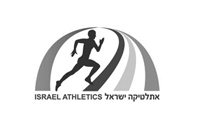The Birth of a Race
The Dead Sea Marathon – the next generation of the Ein Gedi Race
The Ein Gedi race began in 1981 as an initiative of Eli Ron, a member of Kibbutz Ein Gedi. Together with Ilya Bar Zeev, who was a running coach, it was agreed that the race would be along the length of the Dead Sea, for a distance of 25 km, as is customary throughout the world. In Israel, this distance was still unique. The race was announced as a preparation for the Tiberias Marathon and the month of November was set as the target date. The race was organized entirely by volunteers from the members of Kibbutz Ein Gedi and its children without a budget. A significant part of the runners was hosted in the kibbutz, in the children’s communal accommodations, on mattresses and sleeping bags and the runners dined in the kibbutz’s dining room. The number of runners reached 150 people (at that time it was a fairly respectable number). The race was called Masada Ein Gedi race and the starting point was at the foot of Masada. It’s hard to believe, but the runners ran on highway 90 and the road was never closed throughout the duration of the race.
This race is still considered to be the fastest 25 km race in Israel. The well-known runner at the time, Yair Karni, set a world-class result. Eli Ron’s son, Giora, participated in this race, but fell a few months later on June 7, 1982 on the first day of the first war with Lebanon. Giora was one of the best runners in his youth, but it was natural to name the race after him. The second race that took place in 1983, was called the “Ein Gedi race in the name of Giora Ron”.
In the third race in 1984, the Tamar Regional Council became involved. Even then, all the logistics were still carried out by the volunteering members of the kibbutz, while receiving great practical help from the people of the council – the secretary of the council at that time Moshe Shamir, together with council members Avi Roth and Yuval Sachaf, were fully involved and took care of external relations and sponsors. Kibbutz member Zalman Digmi assisted with the infrastructure for the runners and for many years did an outstanding job.

At some point, kibbutz member Hagai Tsabari joined and raised the level of organization of the race. Over time the race gained great momentum and reputation. The uniqueness of the race was that the communication with the runners was done directly. Any runner who was interested in taking part, contacted Eli Ron directly or other organizers and secured their participation and/or any special requests they may have had. Over the years and gradually all the organization and execution of the race passed into the hands of the council and on its behalf Yaacov Akrish took over the overall management. This process was forced by reality, because the scope of the event was already too large an event for a small kibbutz.
Eli Ron recalls a particular occasion when he and Yaakov were extremely busy marking the parking lots with chalk for the runners on the morning of the race. Eli didn’t have time to run home and change out of his work clothes so when at the end of the race he was called to present trophies and shake hands with the worthy winners, he did so wearing clothes dusted with chalk.
Eli Ron’s second son, Tomer participated in all the races and achieved high results in the long run. He participated in the “Hapoel” team in a race in Belgium and even represented Israel in the World Championship in field races held in Portugal. Only after 25 years, Tomer’s youth record in the 10 km run for a 16-year-old was broken. The record he set in the half marathon has not yet been broken. Tomer was killed in 1995 in an accident in the date grove. He was 31 years old when he died. In 1996 it was decided to add his name to the title “Ein Gedi Race, in the name of Giora and Tomer Ron”.
New stages were eventually added such as a half marathon and a family race, a walking track and more. The race took place every year in February – an unpredictable month in terms of weather, floods and winds caused the race to be postponed twice.
In one of the races, a flood started in the middle of the run, and some of the participants had to cross the onset of the flood in Nahal Hever and Nahal Tzalim. When the flood increased there were runners who ran to the shore and completed the track by wading through the Dead Sea. The runners who finished the run looked like they had been in the swamps for two days…
During the first Gulf War in 1991, there was a debate as to whether to hold the race. In the end it took place and over a thousand runners participated. Everything went smoothly. An hour after the race, you could see over the Dead Sea the missiles being fired at Israel, which looked like comets.
In 2019, the Tamar Regional Council decided to turn the Ein Gedi race into the Dead Sea Marathon and allow the runners to run on an embankment that reaches out to the sea. Since then, the half marathon has been named after the late Giora and Tomer Ron, whose father Eli Ron founded the Ein Gedi race and began this story.




















